Related Tags
“I have to be the best custodian of the brand I can be”: Cesar Gueikian on the past and future of Gibson
Gibson’s CMO on Slash, Iommi, the positives and pitfalls of social media, and why he’s learning from past mistakes to help the brand to a brighter and more exciting future.
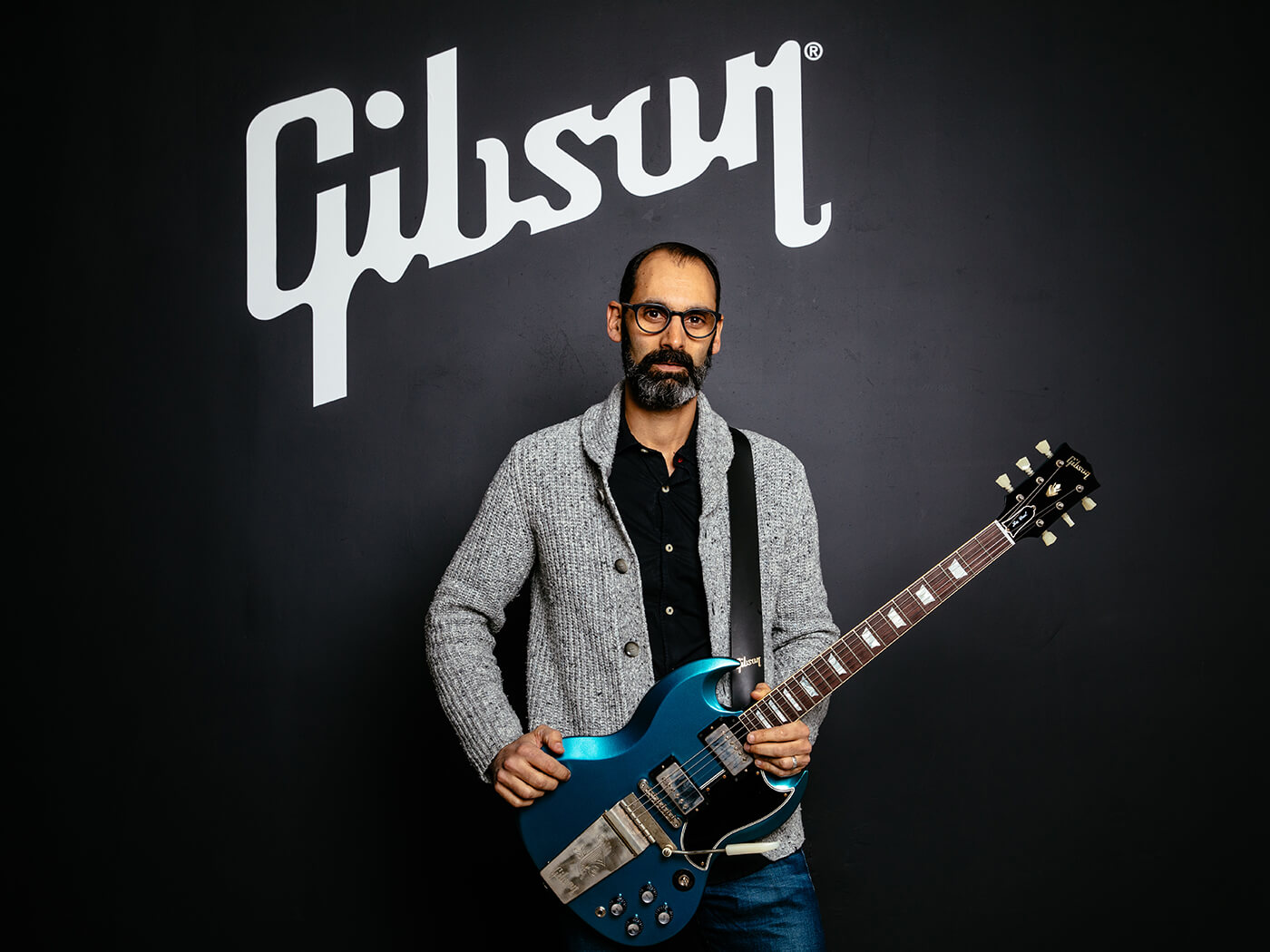
All images unless otherwise stated: Press
It’s been almost exactly a year since Gibson made a triumphant return to the NAMM Show, with the new ownership making sweeping changes to their range that finally gave fans what they’d wanted for years – production guitars that were informed by the iconic instruments that made the brand a household name. The 12 months since has not always been smooth sailing, but as Gibson enters a new decade, the company is bristling with intent, ambition and a determination to embed Gibson firmly at the heart of the guitar world again.
Cesar Gueikian is at the forefront of all of this. Gibson’s softly-spoken CMO has been perhaps the most pivotal figure in the rapid and radical overhaul of the brand’s product line since it emerged from bankruptcy in late 2018, and as a lifetime guitar obsessive and Gibson fan, one of the most visible faces of the rejuvenated company.
As the company prepared to return to NAMM in 2020 with a veritable cornucopia of exciting new launches, we caught up with Cesar to look back on the first year of ‘new’ Gibson, what he’s learned, what he regrets and why he’s excited about the future.
It’s been a year since Gibson returned to NAMM – the response at the time was universally positive, but how were you feeling in the run-up to the 2019 show?
“To be honest it was a monstrous combination of being very nervous, a huge sense of anticipation about how it was going to be received, and a lot of excitement all blended in! We had a very short time frame from when we were finally able to take control of the company on 1 November 2018, and NAMM began on 24 January! And we couldn’t call the NAMM organisers and be like, ‘Hey guys, we need an extra 30 days!’
“The conclusion from our artists and our fans and our dealers, was that Gibson was back. We would never say this ourselves – because we like to let our fans, our dealers, our artists and the media do that – but they were all saying it!
“That was a really good reward at the end of a long couple of days. To show the world what we were up to, what our plans were, and to come back in a really strong way that leveraged our iconic past and looking towards the future in a way that keeps us relevant.”
You were a guitar fan and Gibson obsessive long before you joined the company. Does that make you feel an extra sense of both responsibility and privilege in what you do?
“It is an amazing, incredibly big responsibility. I see myself as having to be the best custodian of the brand that I can be, but I also have the obligation to help lead the company into a future that makes music matter more than ever, that makes guitars matter more than ever, and makes Gibson a key part of that movement. That’s a huge obligation for me.
“I’d been working for the last 20 years, mainly buying companies that had got themselves in problems and returning them to growth. So I was able to combine that background with my number one passion, which is music and the guitar. And not just any guitar, it’s the Gibson guitar – a year and a half ago I had 100 guitars in my collection and 80 of them were Gibsons. Every day I feel so lucky, and that I’ve had the opportunity of a lifetime.”
The guitars Gibson has been making over the last year have been much better received than many of the pre-bankruptcy instruments. What did you do to change things so quickly?
“We can’t create success, but we can create the conditions for success. So one of the key things we did was to redo the factory floor, building a modern-day manufacturing flow, that celebrates craftsmanship, with an obsession with quality. We then hired a team of quality engineers, led by Eric Purcell who ran quality at Tesla, to be our quality ninjas across every step of the process.
“Then what I overlaid onto that was a focus on historical spec with regards to how we were going to recalibrate our collections. Asking: what do our fans expect from the specs of each one of our guitars? And how we go about preserving the classics, while also developing more modern instruments?
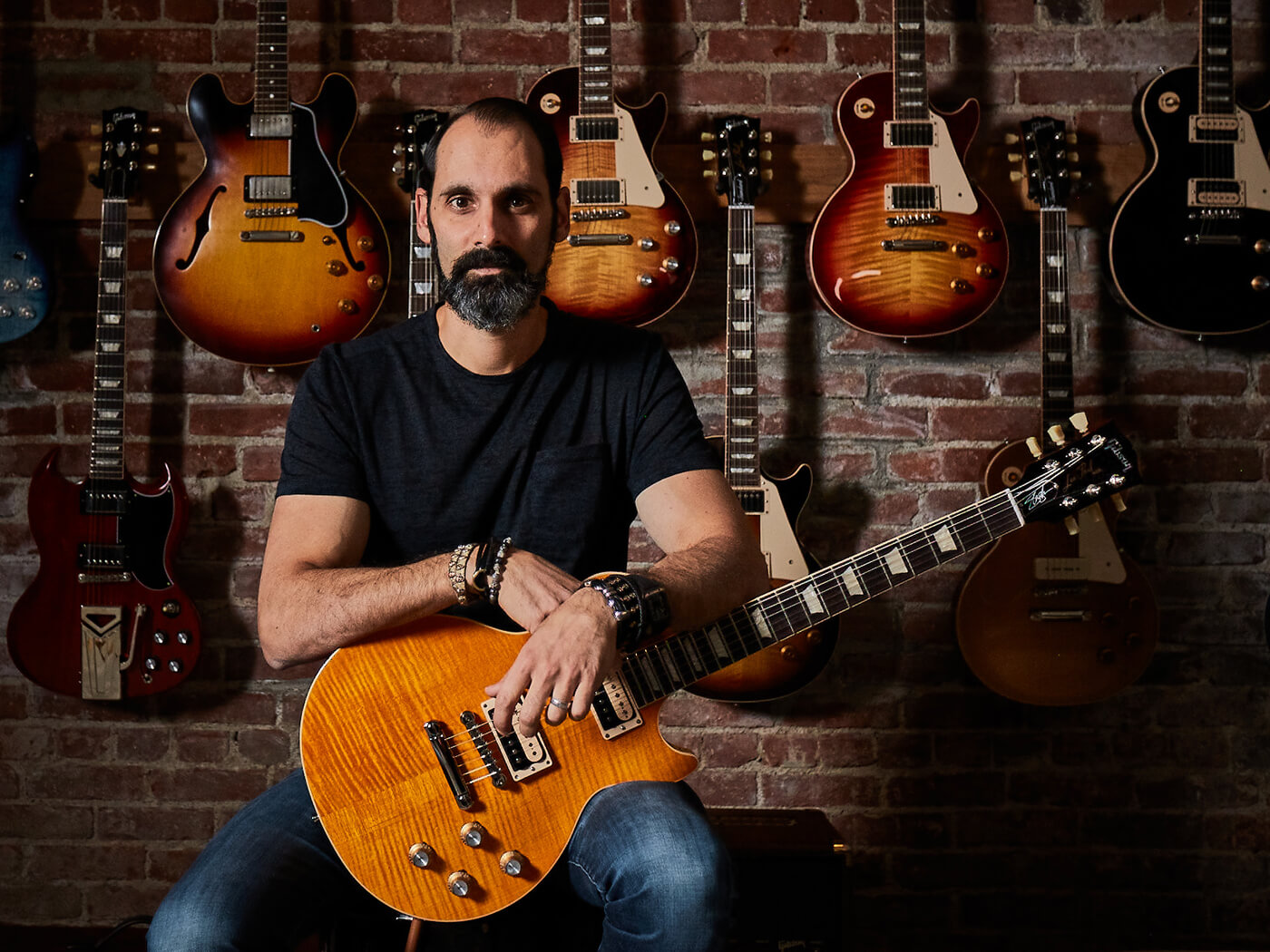
“And then there was also the launching of the Gibson Lab, which I lead, which is all about testing. We’re never going to put something in a guitar just because I think it’s cool, or JC [Gibson CEO James Curleigh] thinks it’s cool – it’s going to go through the Lab, it’s going to get tested, it’s going to go our artists in the Gibson Alliance to test them and take them on stage.
“The Original Collection is never going to change, and only get amplified, but the Modern Collection is going to find the new things and continue with our research and development.”
You’re personally very active and open with what you’re doing at Gibson on social media. Do you see that as part of Gibson reconnecting with its fans?
“People want to have a relationship with Gibson, and if we are the stewards of the brand then that means that we need to engage with them. When I post something, it’s deliberate – I post something that’s going to create excitement, or is a sneak peak… I know what I’m doing! Because it builds interest for when it officially launches.”
Like your tease of Epiphone guitars getting the Kalamazoo headstock last year, which has paid off with the new Inspired By Gibson collection.
“Exactly. I started to get a lot of questions about what we were doing with Epiphone, and we’d been working on Epiphone for most of the last year. And one of the main comments was, ‘What are you doing with the headstock?’ So I went to the Custom Shop, and I have a box there that has a lot of original parts and templates, and I laid out those three different Epiphone headstocks up, and a couple of Gibson things around it, took a picture, and put it up.”

One of the most surprising things that Gibson did in 2019 was the Authorized Partnership Program. How has it been working with small builders to create licensed Gibson-inspired instruments?
“It’s just an amazing way of celebrating the craftsmanship background that Orville left to us. He started as a one-man shop in Kalamazoo, and if you look at Matthew Hughes from Banker… he’s a one-man shop, and he’s making amazing instruments. It’s a way to celebrate our past and our history with Orville.
“We inherited, from the previous owners, a legacy of confrontation and litigation, which we have essentially now been putting to bed. There are literally just one or two situations that we haven’t been able to resolve amicably, and not because of a lack of intention on our side. But everything else, why not collaborate with those who are doing really cool things?
“Because they’re not doing it with any ill intentions or any thought of copyright infringement, they’re thinking about paying tribute to Gibson – they love it so much, they want to make something that is worthy of a Gibson shape.
“The one that’s been released so far is Matthew Hughes and it’s garnered him a lot of attention. We’re great supporters of his, and the whole purpose of launching the Authorized Partnership Programme is to see things like that happen.
“We haven’t yet put anything out there, but there’s an amazing builder called Leo Scala who I’m working with – Scala Guitars. He has a workshop in LA, and I went there I saw his work and met him – it’s amazing what he’s doing, and that’s something that I think will work by partnering with Kramer.”
One of the newest things you’ve revealed is the Murphy Lab. Can you tell us a little bit more about what that is?
“Tom [Murphy] was one of the original leaders who launched the Custom Shop 25 years ago, and as everyone knows, he was one of the pioneers of ageing guitars. I am a huge fan of anything that Tom does, and we’ve become friends. In recent years Tom has been working exclusively with Gibson but under an independent agreement, and it occurred to me that we needed to cement Tom’s legacy in the Gibson history books in a way more powerful way.
“So I asked him, ‘What if we created the Murphy Lab? And you are now the master artisan of the Murphy Lab, in-house, full-time, creating in the kitchen!’ He’ll be inventing new concepts, technologies and new ways that we’re going to improve the historical accuracy of our guitars.
“The Murphy Lab isn’t just a concept. It’s a place where Tom is going to be leading us as we’re pushing the envelope in authentic ageing, and that’s going to be the coolest place in the Custom Shop. And it’s not just ageing, it’ll be research and development, product testing, scanning original guitars… all that stuff is going to happen inside the Murphy Lab.”
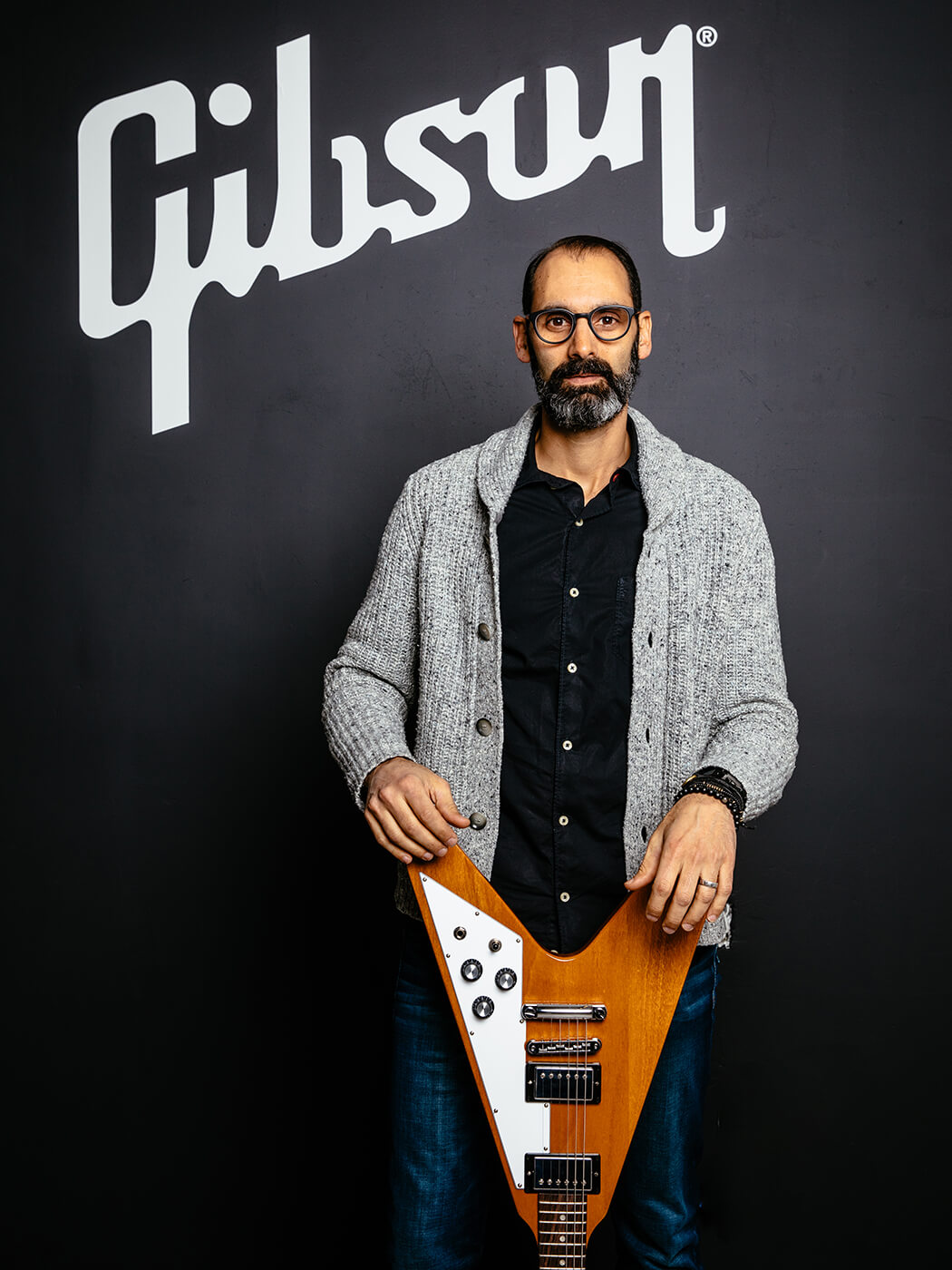
Slash has been one of Gibson’s most beloved artists over the last 30 years. It must have been fun developing a new signature Les Paul and acoustic with him.
“Slash is a guitar nerd just like me – we go back and forth on text, just sending each other pictures of guitars. I personally worked on Slash with this one, quite heavily. We started by creating a concept that we were comfortable going into prototype mode with, and then taking on feedback from him based on him playing the guitars in the studio and on stage with Myles and the Conspirators, and also with Guns N’ Roses.
“All that process of testing, trying different components, changing the pickups winding the pickups differently, changing the neck, the hardware… all of that was an iterative process with him until we landed on it. And it was the same with both the electric and acoustic.
“The J-45 is the first time that we’re doing an acoustic with him, and these guitars are really different and unique compared to any J-45 that you will have played in the past. The way I think about it is a blend of traditional appointments with modern features, because it’s got a very big, rounded V profile neck, and a modern 16-inch radius fingerboard.
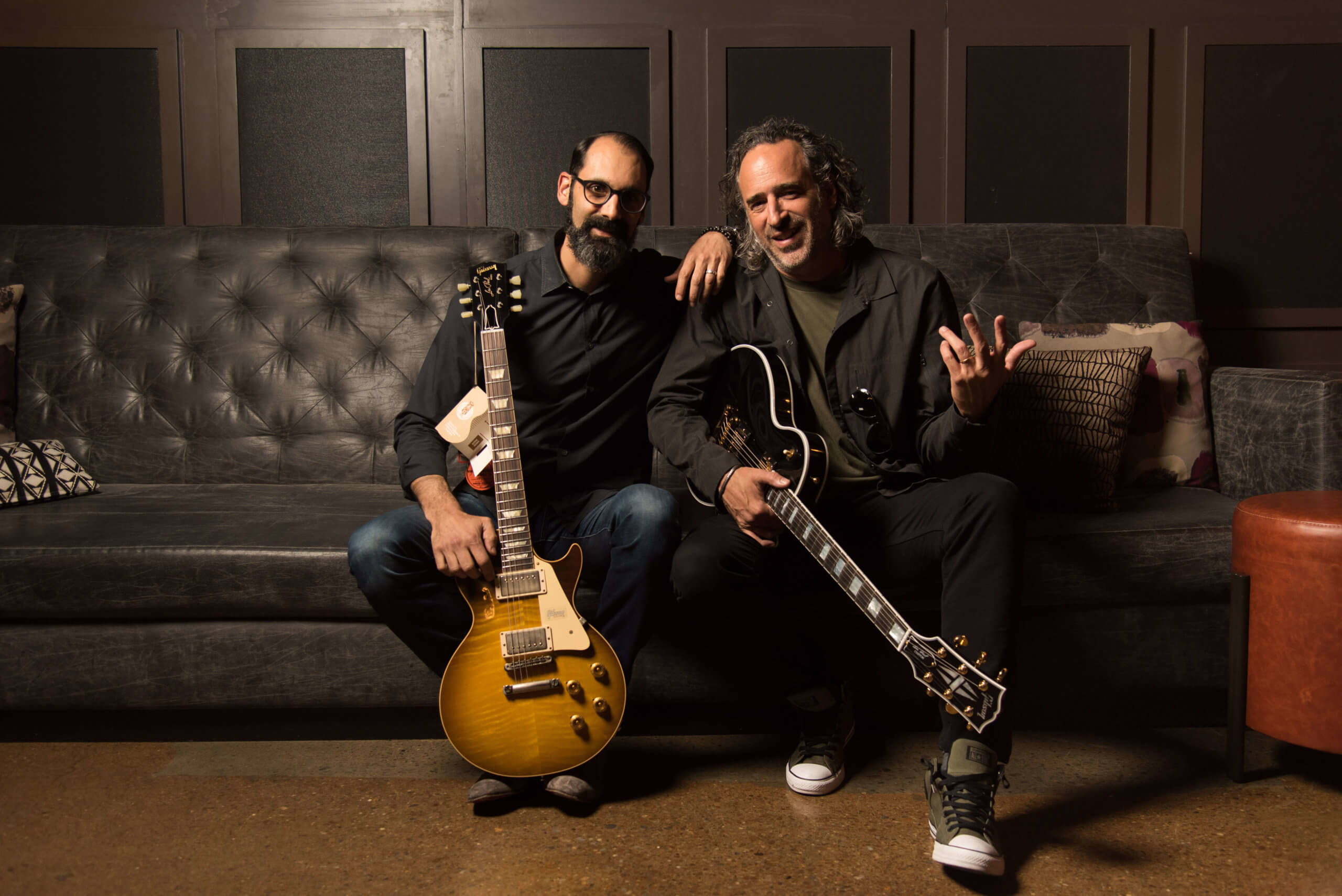
“As we all know, Slash likes bending, so the 16-inch radius – compared to a 12-inch – allows you to bend the strings a little bit easier while keeping that amazing modern playability. And we also went back and forth with him on tweaking the pickup, and ended up landing on a modified LR Baggs VTC.
“Also, on the Les Paul side, I’d like to mention that for the first time in Gibson’s history we’re actually doing a three-way collaboration. So Slash developed a new set of Ernie Ball strings that are only going to be available through Ernie Ball direct, and those are the strings that are going to be on the new Les Pauls. And then he uses the Dunlop Tortex picks and so all the guitars, including the acoustics, will come with his picks in the case. So I’m excited about that – a Gibson, Ernie Ball and Dunlop collaboration is definitely a first.”
You’ve also worked with Tony Iommi on creating a signature version of his iconic SG – that feels like it’s a special project for you.
“It was an incredible experience for all of us, but for me personally it was the ultimate experience, because I picked up a guitar because of him. The moment that I decided I wanted to play guitar was when I was 10 years old, and I put a vinyl record that my dad had. It was unopened, so I ripped the plastic off and put it on because the cover of the record just spoke to me, and I had to hear it… and that was Black Sabbath.
“It was so great having him over in Nashville and showing him what we’ve been working on… because to me he is the godfather of heavy metal, and that guitar is a huge part of that. When he came to the Custom Shop and the factory, he spent so much time just walking around, talking to people, taking pictures with everyone who wanted to take a picture with him, he signed records… he was there for hours!
“At one point in the main factory, there was an actual line of people waiting to take pictures with him. It meant so much to all of our factory craftsmen and artists that he did that, that was one of the proudest moments of the last year, that JC and I always talk about.”

Speaking of proud moments then, what’s your personal highlight of your first year or so in charge of Gibson?
“I’ve had so many it’s been like drinking from a firehose! But I’m an Armenian born in Argentina, so I grew up with a wide variety of music, and I originally learned to play classical – I wanted to play Black Sabbath but I only had a Spanish guitar at home! And there’s a Latin band called Maná that I grew up listening to – they’re an incredibly big band, 12 Grammys, 60 million records sold.
“But I developed a really close relationship with them, and they invited me to go on stage with them a couple of times – so we played at the American Airlines Arena in Miami, and the final leg of the tour was seven sold-out nights at the LA Forum, and they invited me to play on their last show. Those moments give me chills.
“And also working with new artists through the Gibson Generation Group. It’s so amazing to see the passion of these young guitarists, and they feel incredibly lucky that they’re doing this. But we’re the lucky ones that are finding this new talent because it’s so exciting to make the guitar feel relevant.”
On the flipside, there have been a few difficult moments over the last year. Is there anything you wish you’d done differently?
“Mark Agnesi is one of the most knowledgeable and amazing Gibson guys, and I’ve learned so much from him over the years as his client – I’ve got a lot of vintage Gibsons from the 50s and 60s that I bought from him. And I always relied on him for knowledge, because I’m a nerd and I want to learn things.
“But I personally made the mistake of having Mark do that video [the now-infamous ‘Play Authentic’ video – Ed], and if you ask me what I’d like to have done differently, it’s that. At the end of the day our objective is for us to protect our fans, and when someone buys a Gibson they expect the quality of a Gibson, and that’s a good thing.
“But using social media to try and deliver the message was probably my biggest mistake, and in hindsight, I think I shouldn’t have done that. What I was trying to do… I didn’t see it as us being ‘threatening’ or anything like that.
“We want our fans to buy our guitars because they believe we are making the highest quality instruments and that they are made to a higher quality standard than any other manufacturer. And all we wanted to do was to protect them from anything that could be misleading.
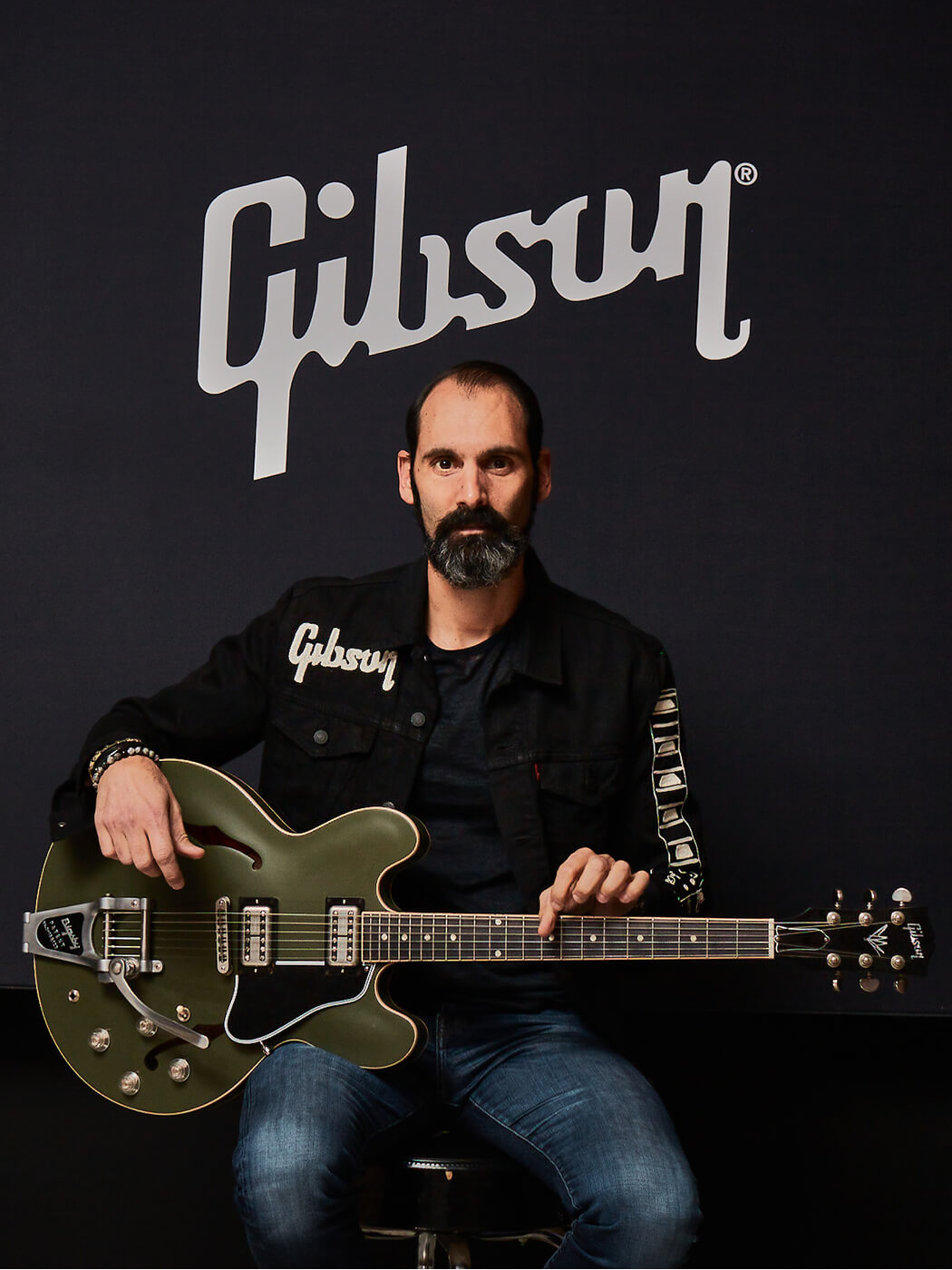
Finally, what’s the biggest lesson that you’ve learned about Gibson, and about making Gibson guitars, since you joined the company?
“The biggest learning from it has been that every step matters. We call them the ‘15 steps’ of the build process – from beginning to end – and my preconceived notion when we came into the company in 2018 was, ‘Well first, let’s identify the five that are the critical ones… [to making a great guitar]’ but in fact, there are 15!
“That’s why we needed to create a quality team that best serves what we need – because our guitars are hand-made, so they’re never going to be 100 percent consistent, and of course, every piece of wood is different. So in that pursuit of quality, and for my obsession with quality, that’s my biggest learning – that out of the 15 steps… 15 steps matter!”
For more information about Gibson guitars, check out gibson.com.
